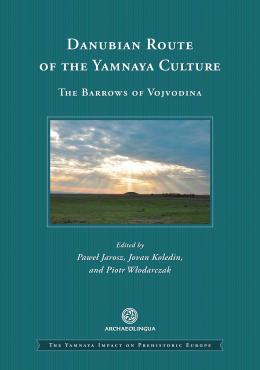Danubian Route of the Yamnaya Culture

Danubian Route of the Yamnaya Culture
| 18 697 Ft |
| Price |
The Yamnaya Impact on Prehistoric Europe 3
Budapest, Archaeolingua, 2021
Keménykötés | Hardcover
258 oldal, színes és fekete-fehér illusztrációkkal | 258 pages with colored and grayscale images
ISBN 978-615-5766-50-3
Description
In 2016–2021, a Polish-Serbian research project focussed on Vojvodina’s burial mounds from the 3rd millennium BC. In its centre were the excavations of two Yamnaya culture barrows, Šajkaš and Žabalj, conducted in 2016–2018 in the Bačka area, on the western edge of the Eurasian steppe. The material brought to light at these sites is currently the most important set of sources on the burial mounds in Vojvodina, and is essential for the wider territory of the Pannonian Plain as well. This book presents the results of the project fieldworks and the specialists’ analyses completed thus far.
The project “Danubian Route of the Yamnaya culture” was financed by the National Science Centre (Kraków, Poland). Its implementation was possible thanks to a cooperation agreement between the Institute of Archaeology and Ethnology of the Polish Academy of Sciences and the Vojvodina Museum in Novi Sad.
Leírás
2016–2021 között a lengyel-szerb közös kutatási projekt a Kr. e. 3. évezredre keltezett vajdasági halomsírokra összpontosított. A kutatás középpontjában az eurázsiai steppe nyugati határán fekvő Bácska területén található, két kurgán, Šajkaš/Sajkásszentiván és Žabalj/Zsablya állt, amiken 2016–2018 között végeztek ásatást. A lelőhelyekről napvilágra került leletanyag jelenleg a vajdasági halomsírok tekintetében rendelkezésre álló legfontosabb forrásanyag, ami tágabban a Kárpát-medence vonatkozásában is jelentős. Jelen kötet a projekt eddig elvégzett terepi kutatásainak és a szakértői elemzéseknek az eredményeit adja közre.
A „Jamnaja kultúra dunai útja” pályázatát a Lengyel Nemzeti Tudományos Központ támogatta (Krakkó, Lengyelország). A kutatási projekt a Lengyel Tudományos Akadémia Régészeti és Néprajzi Intézete és az újvidéki Vajdasági Múzeum közötti együttműködés eredményeképpen valósult meg.
| |
|
|
1067 Budapest, Teréz krt. 13. |
|
|
|
|
About us
The Archaeolingua Foundation and Publisher is involved in publishing series and standalone publications in the disciplines of archaeology, linguistics, historic sciences and heritage protection for over 25 years.
Learn more
Publishing
We publish both as standalone editions and as a volume of a professional series.
Learn more
Contact us
Archaeolingua Foundation

